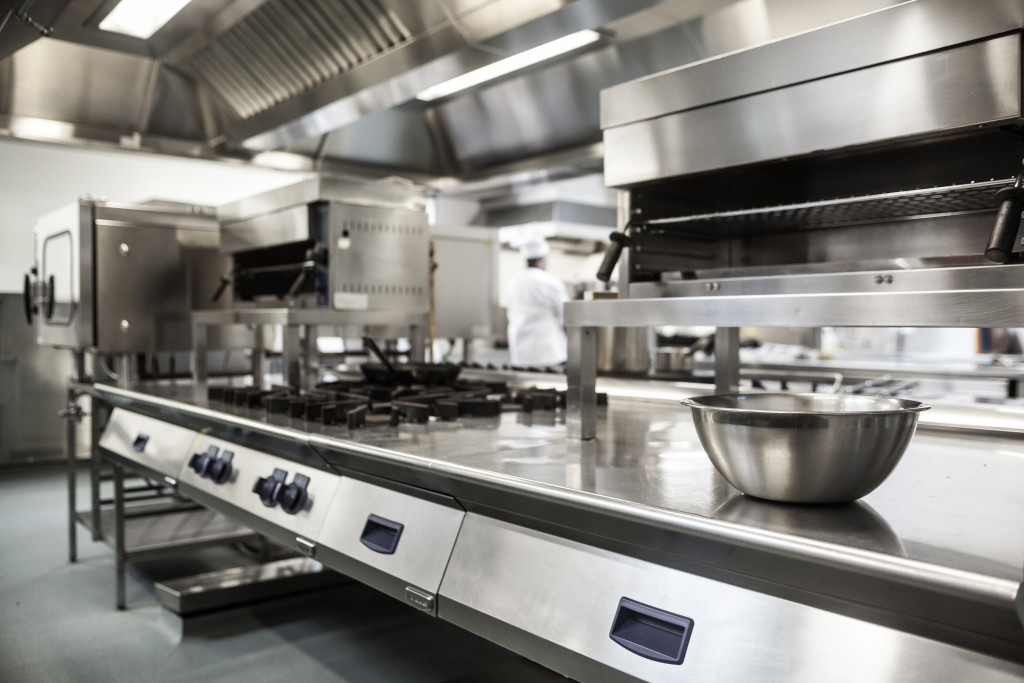- Simplifying your menu can enhance restaurant efficiency by improving service speed, reducing waste, and focusing on quality.
- Investing in efficient kitchen equipment and inventory management software can streamline operations and reduce costs.
- Effective employee training ensures competent service and aligns the team with the restaurant’s mission and values.
- Prioritizing supplier relationships can ensure a steady, high-quality supply of ingredients and offer potential negotiation benefits.
- Optimizing the restaurant’s layout improves workflow efficiency and creates a pleasing dining environment.
Running your startup restaurant involves juggling multiple tasks and roles. But, how do you make your operations more efficient? From streamlining your menu to effective inventory management, improving the efficiency of your startup restaurant can significantly impact your success and profitability. Delve into some of the best strategies to help your restaurant run like a machine.
Simplify Your Menu

First and foremost, simplifying your menu is a key strategy in improving the efficiency of your restaurant. An overstuffed menu can lead to customer confusion and increased stress for your kitchen staff. Focusing on a narrower range of dishes can ensure higher quality, faster service, and better consistency.
It allows your kitchen to specialize and excel in a select few items, reducing preparation times, and minimizing waste. This can also streamline your inventory management as fewer ingredients are needed, making tracking and controlling stock easier. Moreover, a refined menu can help create a distinct brand identity, making your restaurant more memorable. All of these factors significantly enhance your restaurant’s overall efficiency and profitability.
Organize Your Processes
Organizing your processes is another essential step in boosting your restaurant’s efficiency. Here are some tips for you:
Invest in Efficient Kitchen Equipment

Investing in efficient kitchen equipment can substantially impact your restaurant’s operation. High-quality, energy-efficient appliances are more reliable and have a longer lifespan, reducing the frequency and cost of repairs or replacements.
Moreover, modern kitchen equipment often comes with features designed to enhance speed and productivity, allowing your staff to prepare food more quickly and consistently, thereby improving customer satisfaction.
For instance, a high-speed oven can reduce cooking times, while a commercial dishwasher can handle large dishes in less time. Even small tools like sharp, durable knives can significantly expedite food preparation. You should also utilize high-quality condiment dispensers to keep sauces and dressings organized.
Additionally, energy-efficient appliances can lower your utility bills, further contributing to the profitability of your business. Therefore, while the initial outlay for such equipment may be higher, the long-term benefits of efficiency, cost savings, and the quality of food and service make it a worthwhile investment.
Implement Inventory Management Software
Implementing inventory management software is crucial in optimizing your restaurant’s operations. This technology not only automates the tracking of ingredient levels, but it can also predict future demand based on historical data, helping you avoid overstocking or running out of essential ingredients.
Moreover, it can monitor the shelf life of perishable items, reducing waste due to spoilage. An efficient inventory management system can save your staff significant time, allowing them to focus more on service and less on paperwork.
It can also provide valuable insights into your most and least profitable dishes, enabling you to make informed decisions about menu changes. Investing in reliable inventory management software can vastly improve your restaurant’s operational efficiency, reduce food waste, and increase profitability.
Employee Training
Effective employee training is integral to the smooth operation of a startup restaurant. It equips your staff with the necessary skills and knowledge, ensuring they are competent on all fronts, from customer service to food preparation. A well-trained employee can handle customer inquiries more efficiently, deliver excellent service, and enhance customer satisfaction.
Furthermore, training programs should also focus on instilling a comprehensive understanding of your restaurant’s mission and values. By doing so, you create a team that is proficient in their tasks and invested in your restaurant’s success.
Also, regular training helps familiarize the staff with new menu items or operational procedures, ensuring consistency and reducing mistakes. In a nutshell, thorough and regular employee training can significantly improve your restaurant’s efficiency, customer experience, reputation, and profitability.
Prioritize Supplier Relationships
Prioritizing supplier relationships is fundamental to the success of your startup restaurant. Strong relationships with your suppliers ensure a steady, high-quality supply of ingredients, enabling you to deliver consistent and top-quality dishes to your customers. Regular communication with suppliers lets you stay informed about potential delays, shortages, or price fluctuations, helping you adapt your operations and menus accordingly.
Furthermore, a good rapport with your suppliers can provide negotiation opportunities, leading to better prices or terms that can significantly improve your restaurant’s bottom line. This relationship also opens the door to exclusive deals or the first pick of premium or seasonal items, setting your restaurant apart from the competition.
In essence, fostering strong supplier relationships is a strategic move that bolsters operational efficiency and enhances the quality of your offerings, customer satisfaction, and overall profitability.
Optimize Your Layout
Optimizing your restaurant’s layout is an overlooked yet vital aspect of improving operational efficiency. A well-planned layout ensures smooth and uninterrupted workflow, minimizing unnecessary movements and thus saving time.
It encompasses everything from the arrangement of kitchen equipment for easy access, and strategic placement of dining tables for swift service, to efficient design of the entrance and exit points for seamless customer flow. Consider factors like your restaurant size, the type of service (buffet, sit-down, fast food), and peak hours while designing the layout.
Moreover, a comfortable and appealing layout contributes to a pleasant dining experience, encouraging customers to spend more time (and money) at your restaurant. Therefore, investing time and resources in optimizing your restaurant layout can enhance staff productivity, superior customer service, and increased profitability.
In conclusion, running a startup restaurant requires a fine balance of various elements, from menu design, to inventory management, employee training, and supplier relationships. The opportunity to transform your restaurant’s operations is right at your fingertips. Start making these changes today!
